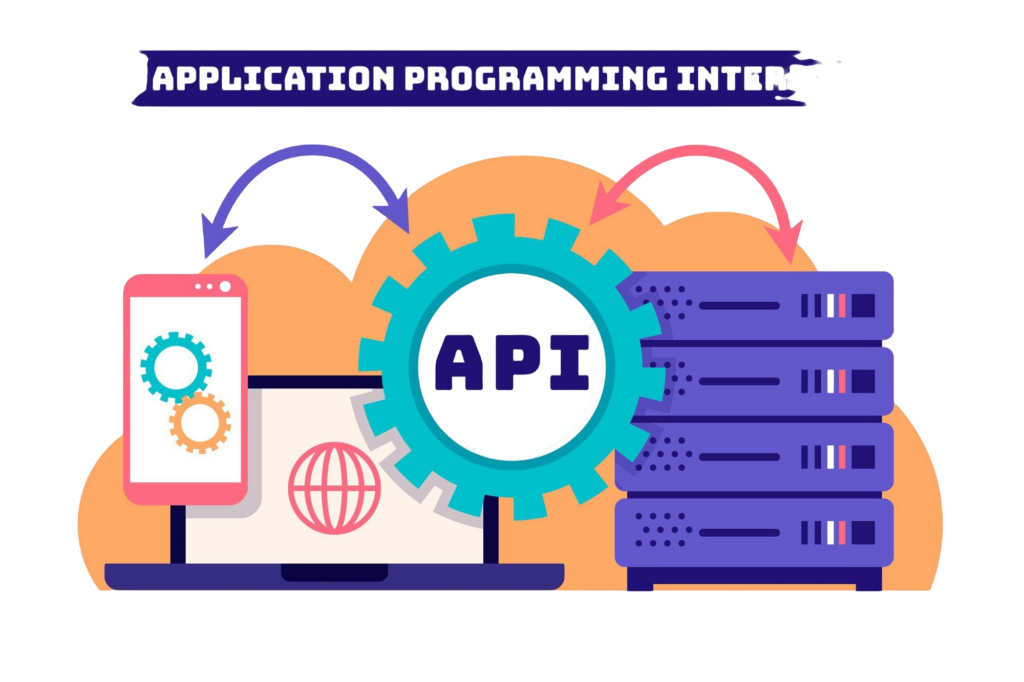The web is constantly evolving, changing the way we communicate, work, and live. As we enter 2025, the pace of technological advancements is accelerating, bringing with it a host of opportunities and challenges for developers, businesses, and users alike. This article delves into the pivotal web technology trends to watch in 2025 and beyond, offering valuable insights into how these advancements are reshaping the digital landscape. It highlights the critical role of web development companies in the UK in spearheading these innovations, enabling businesses to harness cutting-edge solutions and stay ahead in an ever-evolving digital world.

1. Artificial Intelligence and Machine Learning Integration
AI and ML are no longer buzzwords-they are integral to modern web development. Artificial Intelligence (AI) and Machine Learning (ML) integration combines AI’s ability to simulate human intelligence with ML’s capability to learn from data, enabling systems to adapt and improve autonomously. This synergy drives applications like personalized healthcare, fraud detection, and autonomous vehicles, where ML analyzes data to identify patterns, and AI uses this knowledge for decision-making and problem-solving. From chatbots to personalized user experiences, these technologies are redefining web interactions. In 2025, we expect to see:
Enhanced Personalization:
Websites and applications will leverage AI to offer tailored content, predictive search, and adaptive user interfaces.
AI-Powered Development Tools:
AI-driven coding assistants such as GitHub Copilot streamline development processes, reduce errors, and enhance productivity.
Conversational Interfaces:
Chatbots and virtual assistants will be far more advanced, enabling human-like interactions in customer service, e-commerce, and much more.
2. Web Assembly (WASM) Revolutionizing Performance
Web Assembly is still on the rise, promising near-native performance for web applications. Its portability and compatibility allow developers to create applications that run seamlessly across platforms, from browsers to servers, with minimal overhead. Its capability of running code written in multiple languages at high speed within the browser makes it a game-changer for:
Complex Web Applications:
Video editing, gaming, and 3D rendering can now be run seamlessly in the browser.
Cross-Platform Development:
WASM simplifies building applications that work consistently across different platforms and devices.
Server less Computing:
WASM’s combination with server less architectures promises to bring new advantages to edge computing.
3. Progressive Web Apps (PWAs):
Progressive Web Apps (PWAs) are transforming how we interact with web applications by combining the best of websites and native mobile app, Progressive Web Apps (PWAs) represent a middle path between websites and mobile apps that provide responsive, reliable, and engaging user experiences.
Major PWAs advances for the year 2025 are listed below:
Deeper Integration with OS Features:
PWAs are becoming more deeply integrated with operating systems, enabling features such as file system access, notification control, and app installation prompts.
Offline Functionality:
Better caching strategies and service workers will improve offline access and performance.
SEO Benefits:
As Google continues to prioritize fast and responsive websites, PWAs will play a big role in boosting search rankings.
4. The Rise of Headless CMS and APIs

Headless CMS architectures have been replacing traditional content management systems. Headless Content Management Systems (CMS) and APIs are revolutionizing content delivery in 2025, enabling greater flexibility, scalability, and performance for modern digital experiences.
These decouple the front-end from the back-end, bringing forth unparalleled flexibility. Trends include:
Omnichannel Content Delivery:
Businesses can deliver content on different platforms, such as websites, mobile apps, and even IoT devices.
Faster Development Cycles:
Decoupling the front-end allows developers to make use of frameworks like React, Vue, or Angular to develop more quickly and efficiently.
Scalability:
APIs are quite scalable to integrate with third-party tools, which will help growing businesses scale without much of a hitch.
5. Web3 and Decentralization
The decentralized web, known as Web3, is picking up steam with blockchain technology at its core. Built on blockchain technology, Web3 enables peer-to-peer interactions without reliance on centralized intermediaries, giving users greater control over their data and digital identities.
In 2025, watch for these trends:
Decentralized Applications (D Apps):
Decentralized Apps are becoming user-friendly and accessible, thus enabling secure and transparent interactions.
Tokenization and Digital Assets:
NFTs, digital wallets, and tokenized assets will continue to reshape industries like art, gaming, and real estate.
Enhanced Privacy and Security:
The security features in blockchain itself will give users more control over their data.
6. Sustainability in Web Development
In light of increasing environmental concerns, sustainable web development is becoming increasingly important. Some things to watch in 2025 include:
Green Hosting Solutions:
Companies are using green energy sources to power their data centers, reducing carbon footprint of websites.
Efficient Coding Practices:
Code bloat reduction and resource optimization will become routine practices to enhance performance and energy efficiency.
User Awareness:
More websites will publicize their sustainability efforts, encouraging a better sense of environmental awareness among users.
7. Voice Search and Natural Language Processing (NLP)
Voice search is fast becoming a common mode of interaction due to the improvements in NLP. It has significant implications in web development:
Voice Optimized Content:
Web optimization strategies must change, introducing conversational queries and including long-tail keywords for search engines.
Multilingual Support:
Multiple languages become easier to maintain with the improvement in NLP, allowing worldwide businesses to reach more audiences than ever.
IoT Integration:
Voice control devices such as smart speakers will require web content accessible through those platforms.
8. Cybersecurity Innovations
As cyber threats are growing, developers of web applications are becoming more concerned with the security of the application. Trends in this regard include:
Zero-Trust Architecture:
The focus will be on access controls and verification at every point of interaction.
AI-Powered Threat Detection:
Use of AI to detect vulnerabilities in real-time and act on them.
User Data Protection:
GDPR and CCPA and the rest will keep pushing data handling practices.
FAQs About Web Tech Trends to Watch in 2025 and Beyond

1. What are the most important web tech trends to watch in 2025?
The most important web tech trends in 2025 include AI and machine learning integration, the rise of Progressive Web Apps (PWAs), Web3 and decentralization, WebAssembly (Wasm), headless CMS, and sustainable web development practices. Additionally, voice search optimization, cybersecurity innovations, and the growing role of immersive technologies like AR/VR are also significant.
2. How will AI and machine learning impact web development in 2025?
AI and machine learning are set to revolutionize web development by offering personalized user experiences, enhancing chatbots and virtual assistants, and automating coding processes. These technologies will help developers optimize web applications, reduce errors, and create smarter, more efficient websites. AI will also be used in predictive analytics and decision-making processes for business websites.
3. What is Web Assembly, and how is it transforming web development?
Web Assembly (Wasm) enables code written in various languages to execute with near-native performance directly in web browsers. This technology is transforming web development by enabling high-performance applications such as video games, 3D rendering, and complex data analysis directly in the browser, without requiring additional software installations.
4. What are Progressive Web Apps (PWAs), and why are they important in 2025?
Progressive Web Apps (PWAs) are web applications that offer a native app-like experience within the browser. They are fast, reliable, and can work offline. PWAs are becoming increasingly important in 2025 because they provide a seamless user experience across devices without the need for app store downloads, making them more accessible for both developers and users.
5. How does Web3 change the way websites and applications are built?
Web3 introduces decentralization to the web by using blockchain technology, enabling applications (dApps) that run without centralized control. Websites and applications built with Web3 allow for greater user privacy, data ownership, and transparency. This shift is particularly relevant in industries like finance (DeFi), digital art (NFTs), and gaming.
6. What role does AI play in cybersecurity for web applications?
AI is becoming a vital tool in cybersecurity for detecting and preventing threats in real time. Machine learning algorithms can analyze patterns in website traffic to identify vulnerabilities and block potential cyberattacks, ensuring the security of user data. AI-driven tools also help with automating security patches and updates, reducing the risk of human error.
Conclusion:
The web is entering a transformative era, driven by rapid technological innovations and evolving user expectations. Staying ahead of these trends will be crucial for developers, businesses, and stakeholders seeking to thrive in the digital age. By embracing these innovations, we can create a more connected, efficient, and inclusive web ecosystem in 2025 and beyond. The trends shaping the web in 2025 highlight a digital landscape that is both dynamic and transformative. These developments are not merely technological—they represent a shift in how we interact, collaborate, and engage with the online world
As we look to the future, the convergence of these technologies promises to create a more interconnected, efficient, and dynamic web. However, with this growth comes the need for careful consideration around ethical practices, environmental sustainability, and security. Developers and businesses that can embrace these changes while also prioritizing user experience, data protection, and sustainability will be poised to lead in the next digital era. The web of 2025 and beyond promises to be a dynamic realm where innovation, creativity, and responsibility converge to shape a future that is not only exciting but also inclusive. A web design company in UK plays a pivotal role in this evolution, leveraging its expertise to craft digital experiences that drive progress and foster accessibility for all.

